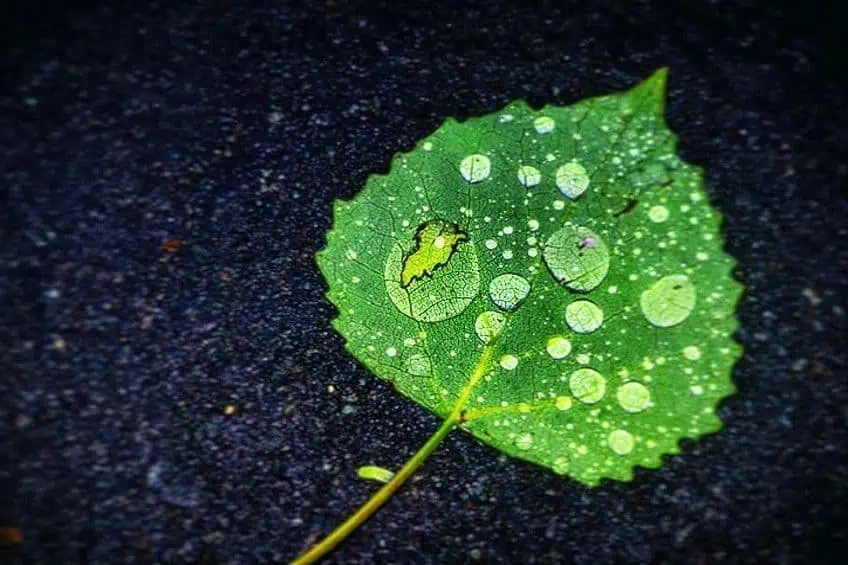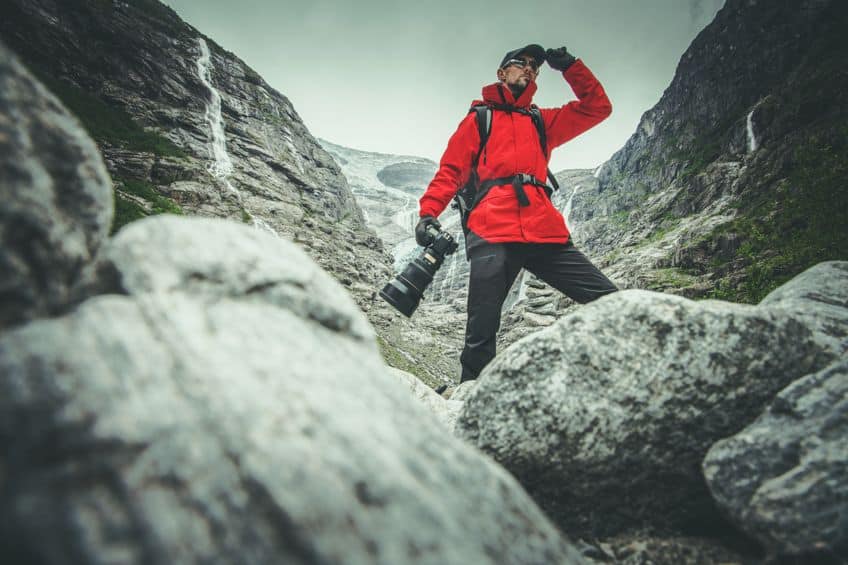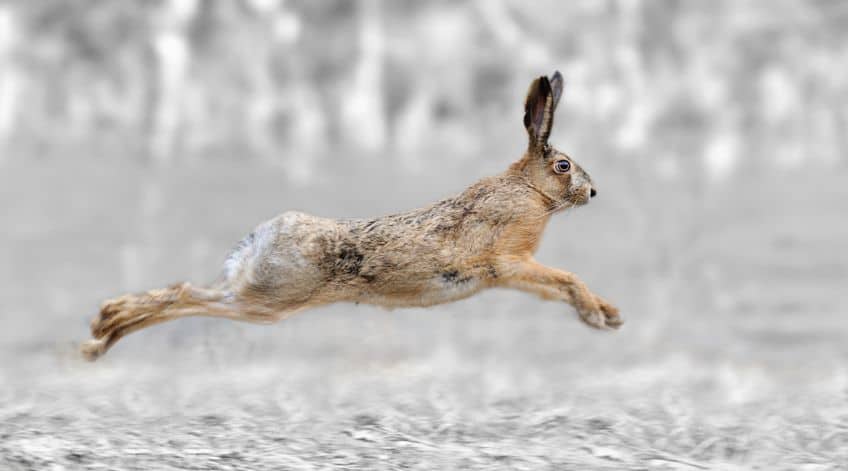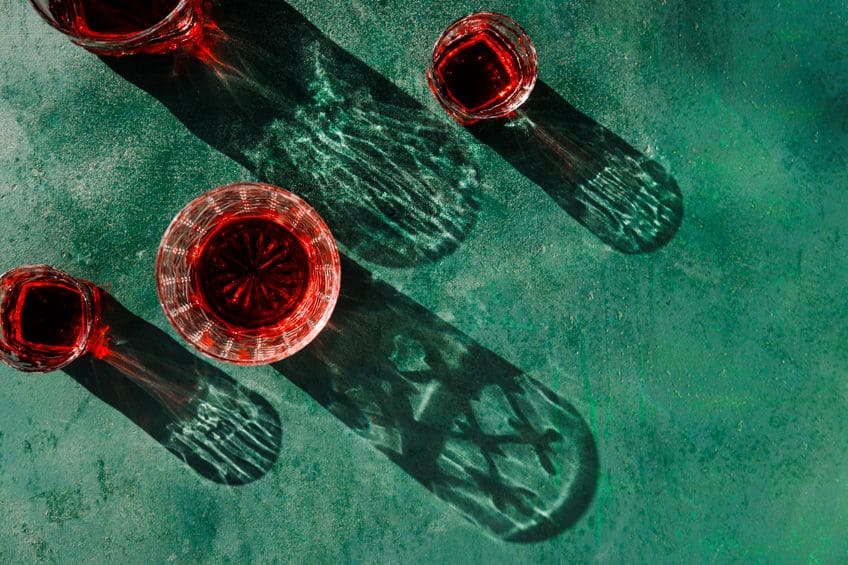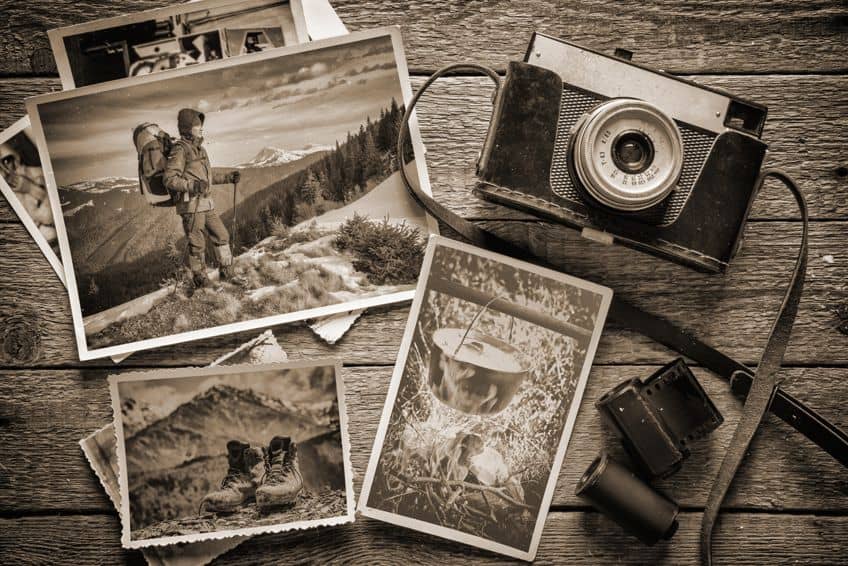Emphasis in Photography – How to Take Photographs That Pop!
What is emphasis in photography, and what techniques can you use to create emphasis in your photos? These are just a few questions that we will dive into below concerning the role of emphasis in photography, and the many creative ways that artists can use the concept to create compelling images that can transform your process! Read on for all you need to know about emphasis in photography!
Contents
Defining Emphasis in Photography
What is emphasis in photography, and why is it so important? In photography, there are numerous techniques that one can apply to the visual elements to ensure the image is not only focused on its subject, but also captivating, visually enthralling, and communicative. Emphasis in photography refers to the use of basic elements such as contrast and color to attract attention to a specific element or subject within the frame. Emphasis can be created using different techniques to guide the viewer’s eye to a focal point and enhance the impact of the photo.
Artists are encouraged to learn more about emphasis to learn how to effectively communicate visual themes and messages while evoking emotion and carrying a narrative in the most impactful way. By understanding how to create emphasis in photography, one is better equipped to control the visual hierarchy of an image and guide a viewer’s interpretation of the composition. To better grasp emphasis in photography, we will explore a few examples and techniques that you can experiment with to improve storytelling and provide clarity to your artistic vision.
Understanding Emphasis in Photography
Emphasis can be created by leveraging the different visual components of an image to highlight the focal point of an image. This concept is also understood visually by imagining a garden filled with vibrant flowers. All the flowers are vibrant in the image; however, the artist wishes to emphasize a red rose located in the center of the garden. The photographer uses emphasis by maintaining the camera’s focus on the red rose while blurring the rest of the flowers slightly to draw attention to the subject.
The photographer can also manually adjust the garden by adding cooler-toned flowers around the red rose to help the camera focus and make the red stand out using a color contrast.
Post-processing can also help with color correction and added sharpening on selected objects. Additionally, one can also imagine emphasis in an image by employing the rule of leading lines, which visually guide one’s eye to the central subject. To establish a focal point, photographers can employ selective focus techniques as explained in the example of the red rose above that helps blur out the background. Contrast can also highlight an object or subject through color, texture, tone, and lighting to make the subject stand out in the composition. Along with leading lines, photographers also favor framing techniques and the Rule of Thirds to direct the viewer’s eye and create a focal point.
Examples of emphasis in photography can be seen in genres such as wildlife photography, which can emphasize unique textures and features of animals through close-up focused images and animal portraits. Other examples of emphasis in photography can be studied in landscape photography where photographers create focal points to emphasize rock formations or vast open stretches of land. Famous photographs such as The Kiss (1950) by Robert Doisneau and Afghan Girl (1984) by Steve McCurry are also examples of emphasis in photography.
Different Techniques for Creating Emphasis in Photography
Essentially, emphasis can be understood as the ways that photographers direct the viewer to the main subject of the image. By understanding these methods, you can create compelling focal points that captivate viewers and hold their attention in visually stunning ways.
Below, we will dive into detail on the techniques to use when creating emphasis in photography.
Composition Techniques
Different composition techniques, as we have touched on in the example of the red rose in the flower garden, can be used to create emphasis. These include techniques such as the Rule of Thirds, which is a compositional guideline that involves the division of the image into nine equal parts. This further includes the use of two vertical lines and two horizontal lines placed along the grid so that one can frame the main subject along the gridlines or at their intersections. This technique avoids placing the subject in the center to stimulate interest and create visual tension as opposed to placing the subject directly in the center, which can be a bit boring. In using the Rule of Thirds, photographers can create a natural off-center balance that also enables harmony across the composition and emphasizes the subject in a way that is visually intriguing.
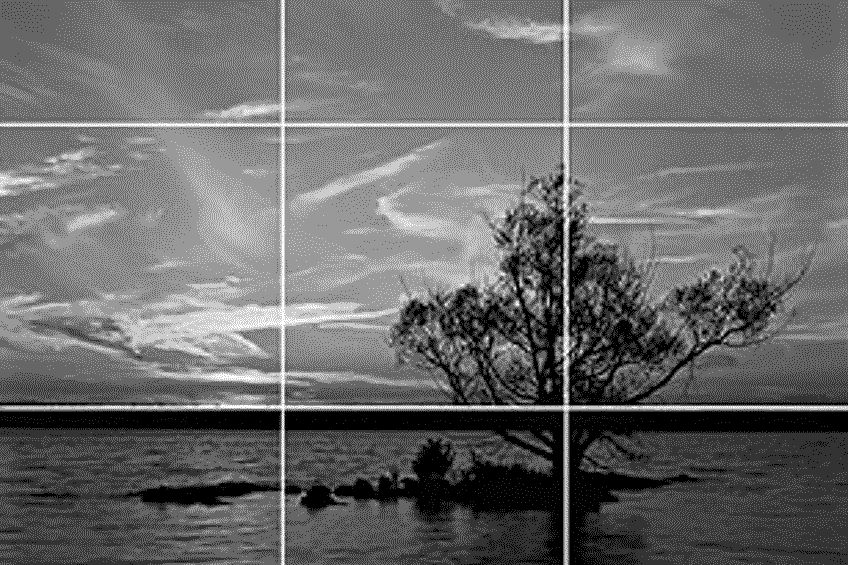
Photographers can also use another compositional technique called leading lines to create emphasis on the subject. Leading lines are also understood as linear lines within an image that draw the viewers’ gaze toward the subject. These elements can take many forms, including architectural elements such as railway tracks, stairs, and roads that act as guiding lines. Artists can strategically leverage leading lines to establish a visual path and visual cues that direct one’s gaze from the foreground into the background and toward the emphasized subject. Leading lines elevate the image and improve its sense of depth, perspective, and storytelling.
Symmetry is another powerful compositional technique that one can use to establish emphasis.
Symmetry in photography refers to the balanced curation or organization of visual elements, where one half of the composition mirrors the other. Photographers use symmetry to create emphasis by placing the subject along the center of the symmetrical lines to grab the viewers’ attention and establish a sense of order and balance. The emphasized object carries a greater impact and makes for an aesthetically pleasing image.
Color, Contrast, and Lighting
One can also use the visual elements of color and contrast to create emphasis in photography, alongside the aid of lighting. In art, color has remained a powerful element that is excellent for creating emphasis through contrast or the use of vibrant colors. Photographers can adjust the compositional color palette of their works and create emphasis by adding a bold splash of color or more muted tones to the background to instantly capture the viewer’s interest and pinpoint the focal point.
By using contrast in color and lighting, photographers can establish emphasis easily by juxtaposing objects that are light next to darker objects or using proportion to create contrast. Contrast can also be created with artificial lighting and photographic tools to illuminate objects in strategic ways such that the subject can appear in focus. Photographers can position the subject in direct light with the background in softer or darker light to emphasize the subject. Lighting can be used to create dramatic effects, cast shadows, and accentuate the focal areas of the subject. One can also employ complementary colors and adjust the cropping of the image to create emphasis.
By combining the different approaches to color, contrast, and lighting, photographers can be sure to enhance the overall impact of the image and manipulate these elements in a way that conveys the desired message.
Depth of Field, Focus, and Size
Artists also look to techniques in the depth of field and focus to establish emphasis through a controlled approach. Photographers may use a shallow depth of field to isolate the subject and blur the background. This directs the viewers’ gaze to focus on the sharp image of the subject. Alternatively, photographers can also use a deeper depth of field to bring into focus the entire subject and the contents of the background to contextualize the work and establish a sense of coherence in the composition.

Creating emphasis through size in photography can be achieved by adjusting the placement, framing, cropping, zoom setting, and perspective of the image to highlight the scale of a subject as larger and thus the focal point of the image. Famous images that employ emphasis through size in photography include The Face of a Boy (1946) by Willy Ronis and The Blue Marble (1972) by Apollo-17 astronauts.
Creative Ways to Use Emphasis in Photography
Beyond the scope of technicalities in creating emphasis using the basic elements, one can also create focus using unconventional techniques. Artists can explore and experiment with color by manipulating the tones to draw attention to a particular subject. Photographers can also experiment with depth of field and adjust camera settings like the shutter speed and exposure to generate unique effects. Creative methods in motion blur photography have also been used as a non-traditional approach to attracting interest in an image and intentionally blurring certain elements of an image. Double exposure techniques are also highly favored by Contemporary artists who prefer the unconventional route.
Photographic techniques such as long exposure, double exposure, low-key lighting, selective coloring, and tilt-shift photography can be used in creative ways to create emphasis in photography.
Techniques such as tilt-shift photography involve the use of a tilt-shift lens and post-processing methods to create a miniature effect, which emphasizes specific subjects in an eye-catching way. Longer shutter speeds also help capture motion blur effects and produce a sense of dynamism while low-key lighting creates a strong sense of contrast. Selective coloring can be used to convert images into monochrome color tones and selectively color in subjects that you want to emphasize.
Many highly-recommended cameras on the market will suit your experimental needs to create emphasis. These include models like the Canon EOS R5 for detailed, high-res, and colorful imagery, the Fujifilm X-T4 for excellent quality and flexible creativity, and the Olympus OM-D E-M1 Mark III for its compact size, impressive image stabilization, and versatility.
When considering color and selective coloring to create emphasis, one can also pay attention to the value of the subject in relation to the surrounding objects. Perspectives like oblique angles can also be used to uniquely emphasize a subject while creating a stimulating visual language. Techniques used in dark room developing processes that can be used to create emphasis include dodging and burning, which involves the selective reduction of exposure time to brighten specific areas on a print, and burning, which involves the selective increase of exposure time to darken certain areas. This is a method of contrast control along with selective development, whereby one can decide which areas of film receive more or less development time and results in tonal variation and emphasis in certain areas. Techniques such as unsharp masking involve the creation of a duplicate negative image and intentionally misaligning it during the image printing phase to result in a halo effect, which improves the emphasis on the subject.
Common Mistakes to Avoid
Intentionally creating emphasis in photography is a skill that takes practice, experimentation, and careful consideration. It is easy to make mistakes in creating emphasis, however, we have compiled a breakdown of some of the most common mistakes that photographers far and wide have made when establishing emphasis, which you can study and hopefully avoid!
Avoid these, and you will easily be able to create beautiful photographs.
Overemphasizing a Particular Element
One of the most common mistakes photographers tend toward is overemphasizing a particular element when creating emphasis. Focus may be key, but too much is just “too much” and “too obvious”. This happens when photographers make the subject overly dominant, which causes the object to overshadow the rest of the composition. In photography, balance should be carefully considered in the organization of the composition and the desired visual effect. It is important to remember that when creating emphasis in photography, one should be careful to draw enough attention to the subject in a way that is not overpowering. Photographers should consider the size, visual weight, and placement of the subject concerning its context and background.
Poor Composition and Cluttered Images
Among the most significant mistakes that one can make in attempting to create emphasis is poor management of the composition, which can manifest as cluttered and convoluted images. Cluttered compositions can overwhelm the viewer and make it difficult to identify the focal point. A poor composition and lack of organization can disrupt the balance in a frame and appear chaotic, thus diluting the intended subject of the picture. To avoid this error, one can focus on organizing their photo elements to create coherency in the composition.
A few tips to do this include simplifying the composition, eliminating distractions, and leveraging negative space to produce a clean image and highlight the subject.
Failure to Communicate a Clear Focal Point
One might also wonder why visual communication in an image is so important. The failure to communicate a clear focal point is a common mistake when aiming to create emphasis since the lack of emphasis can leave a viewer feeling confused. This can impact the way your art is interpreted and diminish visual engagement. Photographers can improve their communication and emphasis by following the techniques discussed in this article, paying special attention to the depth of field, lighting, composition, and techniques to create selective focus. In doing so, you can communicate your theme and message effectively, and create a strong focal point.
The use of emphasis in photography is highly recommended for those who wish to produce impactful and visually stimulating images. By strategically manipulating an image’s basic components, one can direct the viewer to the intended subject and relay messages much more effectively. Through techniques in composition, lighting, depth of field, color, and size manipulation, photographers can establish powerful focal points that enhance the overall impact of their photographs.
Frequently Asked Questions
What Is Emphasis in Photography?
The act of enhancing the visual impact of an image by directing viewers to the focal point of the composition while using various photographic techniques is referred to as creating emphasis in photography. Emphasis is the intentional highlighting of the subject to stimulate interest and relay a narrative.
What Composition Techniques Are Used to Create Emphasis in Photography?
Techniques used to create compelling compositions are also used to establish emphasis in photography. These include the Rule of Thirds, perspective, leading lines, and symmetry techniques.
What Are Common Errors Made by Photographers When Creating Emphasis?
A few common mistakes made by photographers when creating emphasis in their work include cluttered compositions, a lack of clarity on the focal point and message, a poor composition, and overemphasizing the subject.
Jordan Anthony is a Cape Town-based film photographer, curator, and arts writer. She holds a Bachelor of Art in Fine Arts from the University of the Witwatersrand, Johannesburg, where she explored themes like healing, identity, dreams, and intuitive creation in her Contemporary art practice. Jordan has collaborated with various local art institutions, including the KZNSA Gallery in Durban, the Turbine Art Fair, and the Wits Art Museum. Her photography focuses on abstract color manipulations, portraiture, candid shots, and urban landscapes. She’s intrigued by philosophy, memory, and esotericism, drawing inspiration from Surrealism, Fluxus, and ancient civilizations, as well as childhood influences and found objects. Jordan is working for artfilemagazine since 2022 and writes blog posts about art history and photography.
Learn more about Jordan Anthony and about us.
Cite this Article
Jordan, Anthony, “Emphasis in Photography – How to Take Photographs That Pop!.” artfilemagazine – Your Online Art Source. August 7, 2023. URL: https://artfilemagazine.com/emphasis-in-photography/
Anthony, J. (2023, 7 August). Emphasis in Photography – How to Take Photographs That Pop!. artfilemagazine – Your Online Art Source. https://artfilemagazine.com/emphasis-in-photography/
Anthony, Jordan. “Emphasis in Photography – How to Take Photographs That Pop!.” artfilemagazine – Your Online Art Source, August 7, 2023. https://artfilemagazine.com/emphasis-in-photography/.


